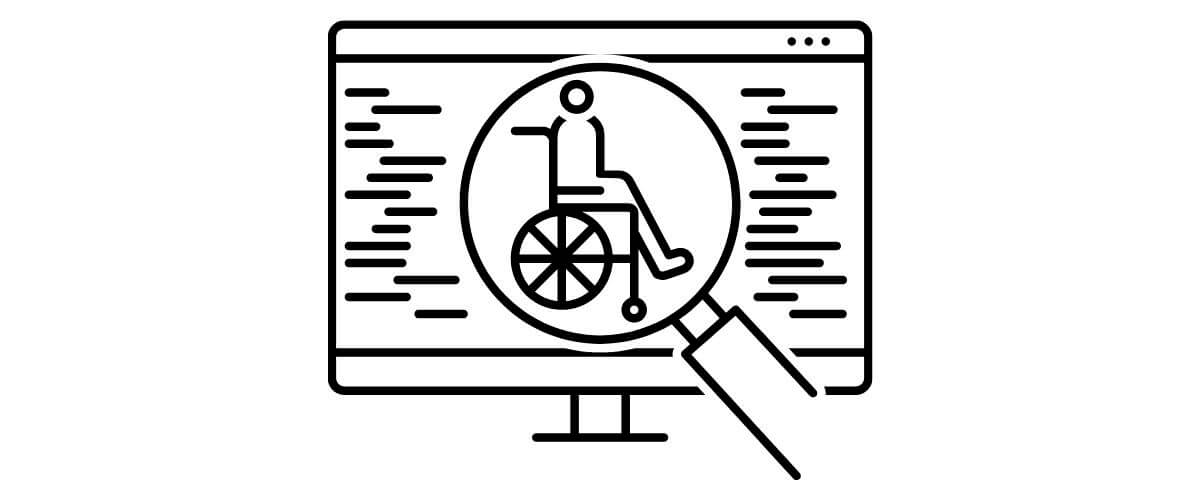
Science is all about collaboration. Discoveries are never made in a bubble, and they’re always supported by a legion of dedicated researchers.
Designing an academic lab for disabilities is one of the most important things that an educational institution can do to encourage its students, and ensure all of the world’s brilliant minds can enjoy equal access.
At OnePointe Solutions, we’ve worked with plenty of laboratories around the country, and we know how to design a space that is accessible and functional for everyone. We’ve designed an untold number of academic laboratories, and ensuring that all of them are accessible is a crucial part of our mission.
How We Create an Accessible Science Lab
For individuals with a disability, science lab settings — particularly those that are old and outdated — are uncomfortable. In many cases, they also pose safety risks.
Upgrading existing spaces to accommodate these individuals is crucial to ensuring that everyone has a chance to safely participate in the wondrous world of scientific discovery, which benefits everyone!
So, how can we make academic activities more accessible to students with disabilities?
In addition to physical disabilities, accessible science labs must also account for:
- Blindness
- Deaf and hard-of-hearing students
- Health impairments
- Learning disabilities
All of these points are taken into consideration by lab designers, and the layout of the entire space will be built around a very specific framework. All of these considerations must also, of course, be in line with any safety measures that the lab requires, such as clean room ventilation and secure containment.
What Is Universal Design?
When designing a truly accessible laboratory, the designers must consider something known as “universal design”. When applied properly, a universal design will accommodate everyone’s needs and allow for every student to fully participate in lessons, regardless of their individual abilities.
There is a layer of this theory that we, as fabricators and designers, cannot be part of. It is up to educators to ensure that every student has ample access to instructions. These educators must also be ready and willing to guide students through safe and appropriate experiments.
We can, however, handle many larger issues, particularly those that deal with physical accessibility and usability.
How to Design an Accessible Laboratory
When we’re developing an accessible lab — whether it’s academic or professional — there are certain things that we will always address.
Accessible Storage
One of our first considerations will be storage.
Normally, laboratories will store their supplies in overhead cabinets and casework. However, individuals with disabilities will have trouble accessing these overhead storage spaces.
Keeping essential equipment in these cabinets is harmful to disabled students, who will have to ask for help or rely on others to retrieve their supplies.
To accommodate for this, the designers at OnePointe Solutions consider the laboratory in its totality. We design floor-level classroom cabinets, and we ensure that the layout truly optimizes your available space.
At the same time, we check, double-check, and triple-check that each aisle meets the 32-inch ADA clearance guideline.
In particularly small laboratories, designers will also carefully consider their choice of laboratory furniture. While it’s important to provide everyone with comfortable laboratory seating, tight spaces will require some innovative thinking.
Stackable chairs can provide a simple solution that, when needed, can be easily stored in a compact space.
Counter Height
When we build the laboratory cabinets, we must also consider the lab countertops. Classrooms require durable and easy-to-clean countertops, and OnePointe Solutions offers plenty of options.
However, we must also consider the height of these workspaces, as individuals with disabilities may be using wheelchairs.
According to the ADA, counters should be no taller than 36 inches from the floor, and all accessible counters must have plenty of room underneath for a wheelchair to fit.
Unfortunately, many prefabricated cabinets and countertops lack this feature. At OnePointe Solutions, we custom-build all of our cabinetry, which means that your lab will be unique and truly accessible.
For many desks and tables, OnePointe Solutions’ custom fabrication process is capable of installing adjustable height legs. This means that every ESD workbench, mass spectrometry bench, and microscope table can quickly become an accessible lab working surface.
(In fact, these adjustable fittings are beneficial for everyone. People come in all sizes and shapes, and the standard counter height will never work for everyone. By giving students the ability to easily adjust their working surface’s height, laboratories ensure that everyone can safely and comfortably participate in experiments.)
Safety Measures
As designers build out their design, they must also consider access to safety measures. Safety showers, eye wash stations, and biosafety cabinets should be within everyone’s reach. This is part of every laboratory’s design process, but it’s particularly important when conceiving an accessible space.
Students with disabilities may move slower than others, and designers must place safety measures accordingly. This can be accomplished with some strategic placement of accessible workspaces and by lowering the controls for fume hoods to an ADA-compliant level (48 inches above the floor).
What Else Goes Into an Accessible Academic Laboratory?
True accessibility doesn’t end with the design specifications.
There are additional features that go a long way to ensuring that everyone has equal access to the laboratory and its facilities, and it’s important to keep these considerations in mind as the design takes shape.
Acoustics and Visuals
To truly accommodate everyone, designers should consider how well a teacher can be seen and heard in space.
For individuals with hearing impairments, acoustics are essential. Particularly large rooms should have a way for lecturers to amplify their voices, so that spoken information can reach students at the furthest reaches of the classroom. Without this service, students are forced to strain to hear lectures and will likely miss vital information.
On a visual level, rooms must have a clear line of sight to the primary lecturing space. Regardless of where someone sits, they should be able to clearly and directly see the projector and the lecturer.
Again, large rooms pose the problem of visual acuity. To compensate for the distance between a student and the lecturer, designers should ensure that projectors and screens are placed strategically.
This will ensure that the text and information that is essential for lessons will be large enough for everyone to see.
Elevators
It may seem obvious, but it’s worth mentioning that any building with more than one flood should have an elevator. These lifts must be accessible to everyone, and they should have ample interior space for wheelchairs to turn around.
When architects design a building, it’s not uncommon to find that there are no elevators in the final design. This often results in poorly placed elevators, which force users to travel long distances to reach their destination.
To remedy this, institutions should thoroughly review plans and make sure that elevators are placed near classrooms.
Equal Access
Disabled students should be able to feel like they are part of the student population. Unfortunately, many buildings are not designed for this, which forces disabled students to use alternate entryways for classrooms. This is an isolating experience, and it doesn’t need to happen.
When designing a new space, regardless of whether it’s a classroom or a laboratory design, architects and designers must work together to create a fully accessible entry. For example, a building that requires a step into the door should have a ramp at its entryway, so that all students can easily enter and exit the room.
Floor Grading
Few buildings are perfectly level.
A laboratory can be the most accessible space in theory, yet it may fail to live up to the vision when it’s fully realized. This is often because designers have overlooked the building’s natural grade both inside and outside of the building.
All ramps should be carefully measured, as the ADA guidelines define an accessible slope as anything with a grade of 8.33% or less.
Keep in mind, too, that these ramps should be built with non-slip materials. Tile may look gorgeous, but it becomes slippery when wet, which ultimately ends up posing a risk to everyone using the ramp.
Seating Space
Everyone needs to sit.
In general, auditoriums, classrooms, and laboratories will have plenty of mobile seating or built-in chairs. However, these features frequently neglect disabled students, who need additional space for mobility aids.
All classroom furniture must be thoroughly vetted for accessibility to remedy this problem. Adjustable height legs are an incredibly useful feature, as are rolling seats that can be quickly and easily moved out of the way.
The quantity of seating should also be taken into consideration. Over time, many educational institutions tend to grow, and more students will often strain the original design. Speak with your designers and ask them about ways to future-proof your space.
Need Help Designing Your Accessible Science Lab?
After everything has been built, teachers do the bulk of the heavy lifting required to make every student feel included. Their work is essential to nurturing curious minds and paving the way for future scientific innovations, and we salute their dedication!
If your institution is interested in redesigning its laboratories or creating entirely new lab spaces accessible to everyone, then it’s time to get in touch with us. We’ll walk you through the process, and we’ll take all of your needs into consideration.
We carry just about everything from classroom cabinets, stainless steel cabinets, and plastic laminate cabinets to classroom workstations, fume hoods, lab chairs and so much more.
At OnePointe Solutions, we work alongside you to design something that works for everyone, and we’re proud of what we do.


